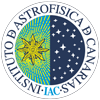Research news
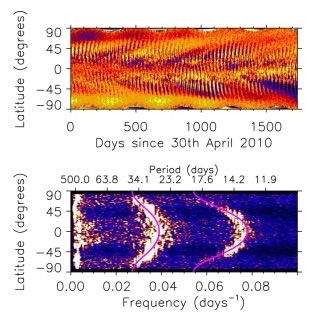
The Sun could have its magnetic axis and its rotation axis misaligned
10/09/2015
The magnetic and dynamical (heliographic) axes of the Sun may not be aligned, according to research by scientists of the IAC. This result should give rise to substantial changes in the models for the generation and evolution of the solar magnetic field, which until now have used the assumption that these axes are aligned. The article, signed among other authors by the Severo Ochoa advanced postdoctoral fellow María Jesús Martínez González, and the Solar Physics research line representative Manuel Collados, was published in the most recent on-line edition of the specialized journal Monthly Notices of the Royal Astronomical Society. >>Read more
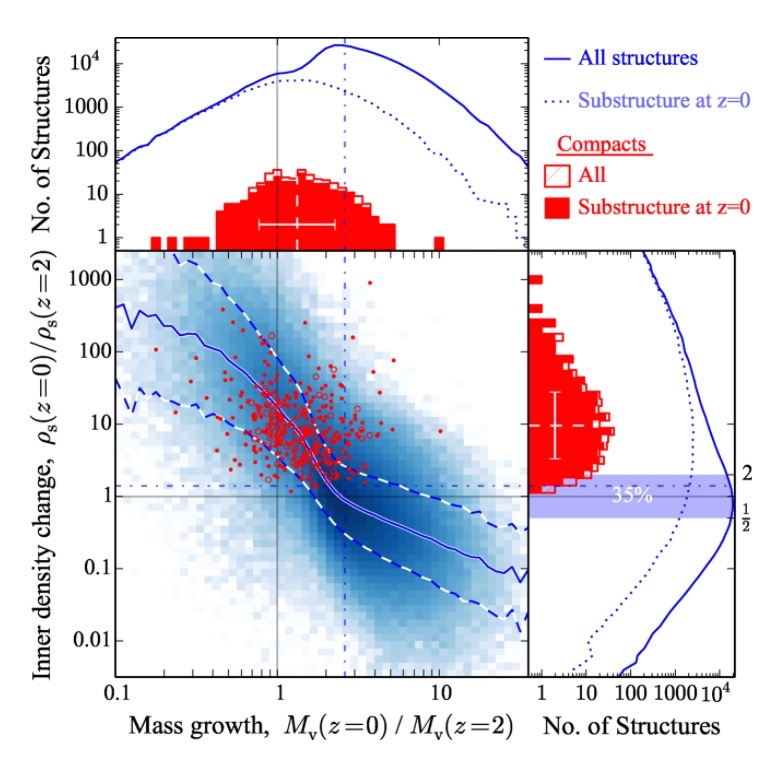
A cosmological context for compact massive galaxies
01/06/2015
Scientists at the IAC, the Severo Ochoa postdocs Martin Stringer and Claudio Dalla Vecchia among them, had theoretically studied the formation histories and location of compact massive galaxies using data from the BOLSHOI simulation, one of the most accurate cosmological simulation of the evolution of the large-scale structure of the universe to date. Among other results thay conclude that over 80 per cent of exceptionally compact systems are substructures of more massive groups or clusters, and that the probability of a given massive substructure being this compact increases significantly with the mass of the host structure. This work has been published in The Monthly Notices of the Royal Astronomical Society.
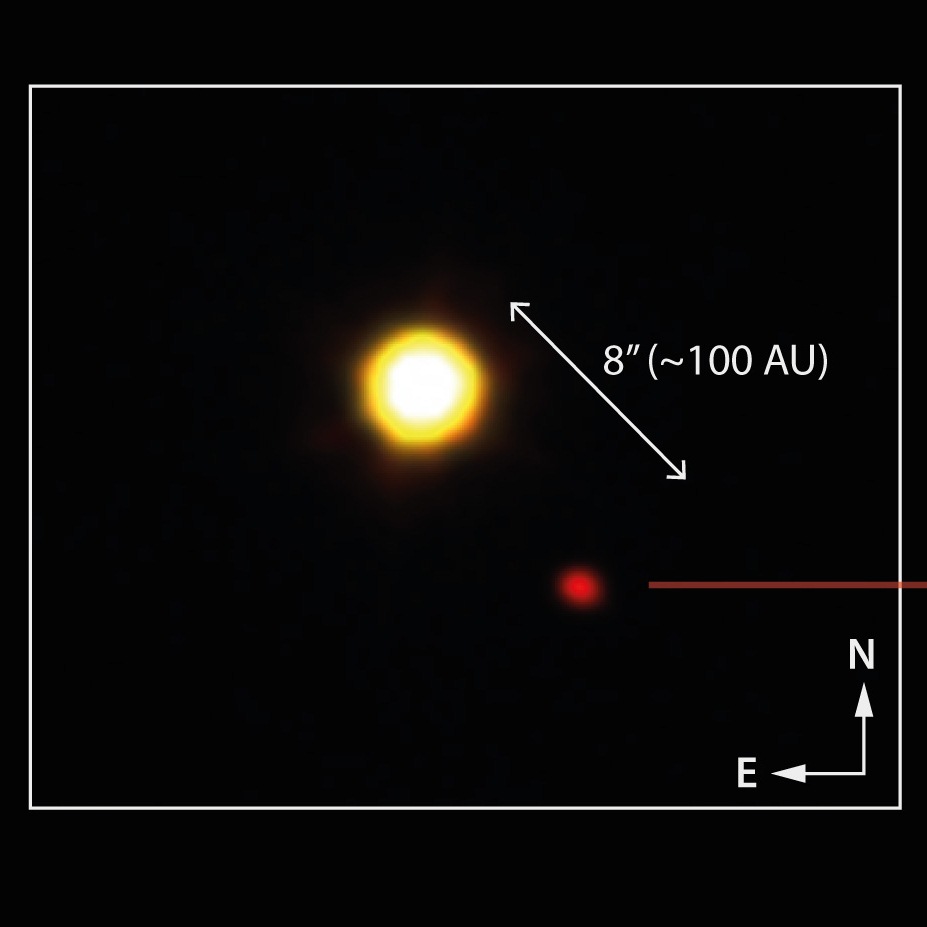
A Super-Jupiter in view
06/05/2015
Scientists at the Institute of Astrophysics of the Canaries (IAC), among them Rafael Rebolo, Director of the IAC and Scientific Director of the Severo Ochoa program in this institution, together with collaborators at the Centre of Astrobiology (CAB) and the Polytechnic University of Cartagena (UPCT) have obtained the image of a giant planet, of some 11 times the mass of Jupiter, orbiting a red dwarf star 40 light years away from us. It is the nearest exoplanet for which an image and a spectrum have been obtained. Optical and infrared spectra were taken with the Gran Telescopio CANARIAS (GTC) at the Roque de los Muchachos Observatory and with the New Technology Telescope (NTT) at the La Silla Observatory, respectively. These results have been published today in The Astrophysical Journal. >> Read more
![Color image (red=Halpha+[NII], green=[O III]5007) of the Ou5 nebula, obtained with NOT at Observatorio del Roque de los Muchachos, La Palma. Courtesy of R. Corradi.](/severoochoa/severoochoa2011-2015/images/imagenesweb/news/J_GarciaRojas_ou5colour_zoom2.jpg)
Problem of Chemistry of the Universe: some keys in planetary nebulae
27/04/2015
One of the methods most often used to measure the chemical composition of the universe is to analyze the spectra of the nebulae where stars are born or die. Each chemical element in the hot gas which makes up these nebulae emits radiation which is characteristic, in the form of spectral lines at particular wavelengths. Nevertheless the chemical composition which is inferred from a spectrum can vary depending on which physical mechanism produced the lines, and this still poses unsolved problems in astrophysics. A group of researchers at the IAC and the University of La Laguna (ULL), among them the Severo Ochoa postdoc Jorge García-Rojas, have carried out a detailed spectroscopic study of three nearby planetary nebulae which have binary stars at their centres, confirming that at least one of the factors behind this problem is the existence of two (or more) gas phases in these nebulae, with different temperatures, densities, and chemical compositions. This study has just been published in the specialist journal “The Astrophysical Journal”. >>Read more
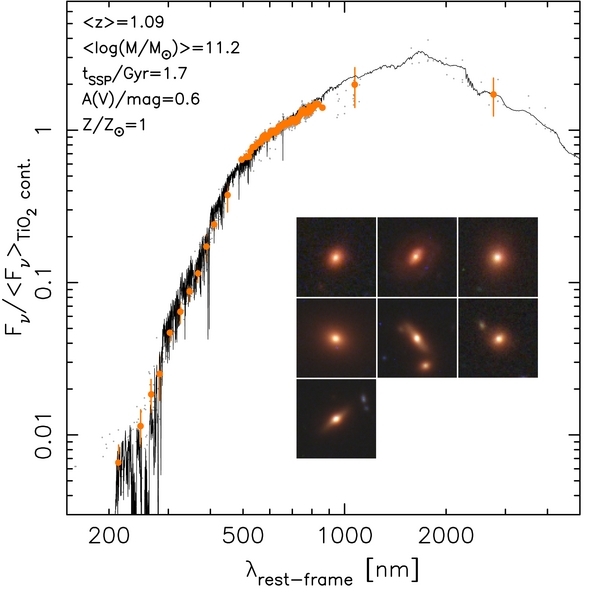
Is the distribution of stellar masses universal?
16/03/2015
The initial mass function (IMF) dictates the distribution of stellar masses for any single star formation event in a galaxy. Traditionally it has been assumed that the IMF is universal, i.e. the same for all galaxies since the origin of the universe. Recent studies of nearby galaxies suggest changes in the IMF. However, the IMF of distant galaxies has been studied only indirectly. A study led by researchers from the IAC / ULL and the Universidad Complutense de Madrid has analyzed for the first time the IMF of massive quiescent galaxies at half the age of the Universe from spectro-photometric data obtained with the Hubble telescope and GTC. The results of this study suggest that the most massive galaxies are populated by a larger number of low-mass stars than expected, and that the IMF has remained unchanged over the last 8,000 million years for these galaxies. The work, which was published in ApJ Letters, is the result of stay of Pablo Pérez González, researcher at the UCM, in the IAC within the Severo Ochoa senior visitors programme.
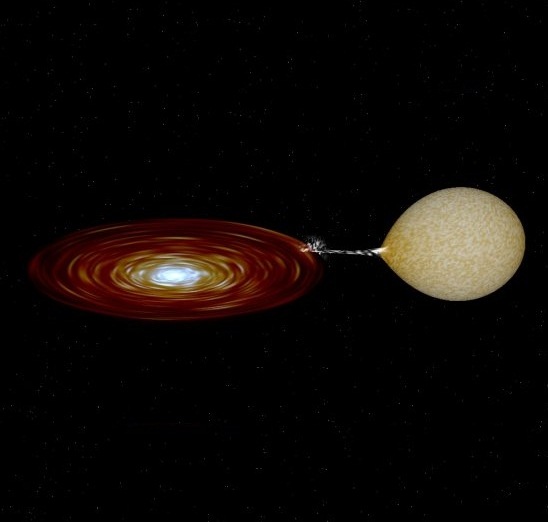
Scorpius X-1, uncovered
03/03/2015
Scorpius X-1 was the first X-ray source discovered outside the Solar System and is the prototypical X-ray binary, the brightest in the sky with persistent X-ray emission. However, more than 50 years after its discovery, its dynamical parameters remained unknown. A recent study led by Daniel Mata Sánchez, PhD student La Caixa-SO at the IAC, with the participation of other IAC/ULL researchers, has obtained new dynamical constraints to the masses of its components, combining statistical analysis of previous orbital data with the best near-infrared spectrum of the source to date. The results indicate that the system is composed of a neutron star with less than 1.73 M⊙, plus a companion star with a mass between 0.28 and 0.70 M⊙, spectral type later than K4 and luminosity class IV. The work has been published in Monthly Notices Letters of the Royal Astronomical Society.

JUPITER, a laboratory for studying exoplanets
18/02/2015
The Astrophysical Journal Letters is publishing a study, led by the Severo Ochoa postdoctoral researcher at the IAC Pilar Montañés, which has been the subject of a report in the journal Nature. It the study Jupiter is presented as an ideal laboratory for research into exoplanets which are similar. The study has used the largest of Jupiter's satellites, Ganymede, as a mirror to analyze the atmosphere of the planet. The observations were performed during an eclipse of Ganymede by Jupiter, and allowed the researchers to observe Jupiter as if it were a transiting exoplanet. >> Read further
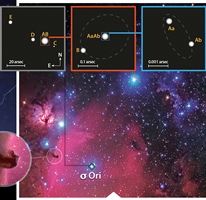
“sigma Orionis”, much more than a star
27/01/2015
An international team of astronomers led by the Spanish researchers Sergio Simón-Díaz, SO postdoc of the Instituto de Astrofísica de Canarias(IAC)/Universidad de La Laguna (ULL), Jose A. Caballero, of the Centro de Astrobiología (CAB, CSIC-INTA), and Javier Lorenzo, of the University of Alicante, have studied in great detail the multiple star sigma Orionis, which continues to amaze those who observe it. The study, which is published today in the Astrophysical Journal, has allowed the determination of the physical parameters of its most massive component stars with unprecedented precision. Further information: IAC press release.
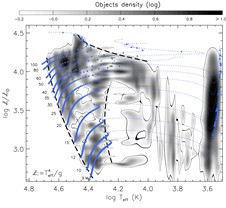
Closer to understand the evolution of massive stars
13/01/2015
The relationship between the stars' effective temperatures and gravities through the spectroscopic Hertzsprung-Russell diagram (sHRD) is a new relevant tool for analyzing the stellar evolution independently of the distance and interstellar extinction of each star. An international team of astronomers, among who is the SO postdoc at the IAC Sergio Simón, have presented, for the first time, the observational distribution of Galactic massive stars (above 8 solar masses) in the sHRD, using spectroscopic measurements of effective temperatures and gravities of almost 600 of such stars. This pioneering work is a further step to establishing boundaries in the still poorly-understood stellar evolution theory of massive stars. More information: Castro et al. 2014, A&A 570, L13
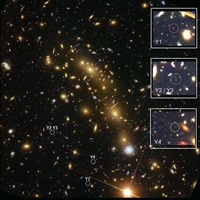
At the frontiers of the Universe: lensing clusters for unveiling the most distant and young galaxies
17/12/2014
Researchers from the IAC and the ULL, among who is the SO postdoc Alina Streblyanska, are part of the international team that have discovered four of the most distant galaxies known to date, analyzing deep HST images of the galaxy cluster MACSJ0416.1-2403, as part of the "HST Frontier Fields" program.
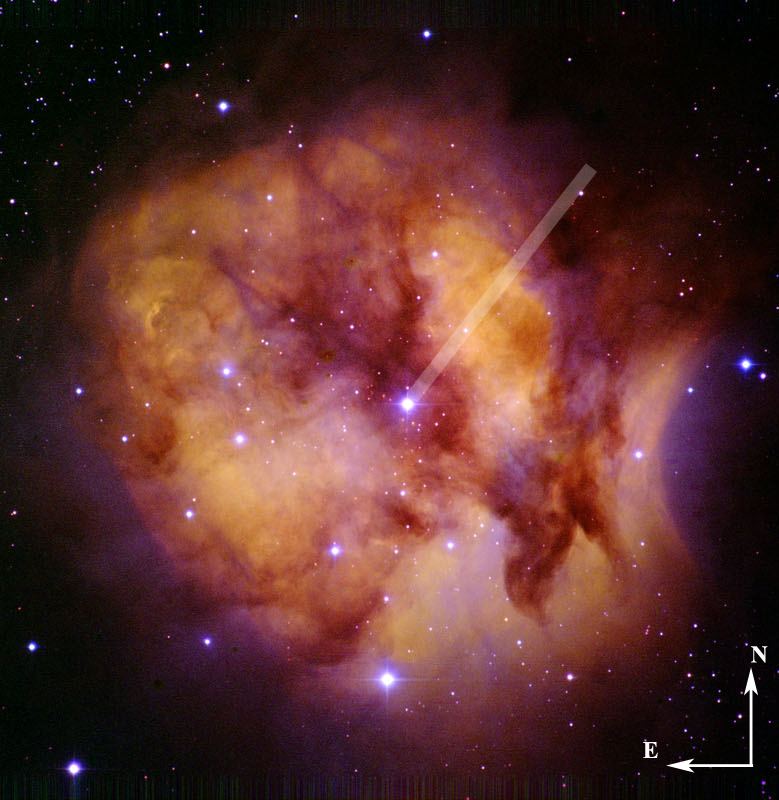
Do chemical abundances in HII regions and their ionizing stars agree?
02/12/2014
The atmospheres of main-sequence massive stars should have the same chemical composition as the interstellar material from which they formed. The SO Postdocs Jorge García-Rojas and Sergio Simón-Díaz, and César Esteban, researchers of the IAC and the ULL, have investigated the chemical abundances of the Cocoon nebula, a close-by Galactic H II region, and its ionizing star, a main-sequence B-type star, using spectra obtained with the William Herschel Telescope in the Roque de los Muchachos Observatory. The results of this study indicate that the Oxygen and Nitrogen nebular abundance values, obtained from relatively bright emission lines, are different to those derived for the star and agree better with them assuming small temperature fluctuations in the nebula, of the order of those found in other Galactic HII regions. The presence of such temperature fluctuations in the gas, make the real abundances in the nebula to be underestimated if they are not taken into account. More information: García-Rojas et al. 2014, A&A 571, A93
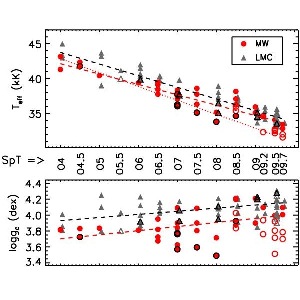
The effect of gravity on the relationship between effective temperature and spectral type for O-dwarfs
27/11/2014
The relationship among effective temperature (Teff), spectral type (SpT) and metallicity of O-type stars has been extensively studied. A recent work, led by the SO Postdoc at IAC Sergio Simón-Díaz, warns about the danger of extracting conclusions about the dependence on metallicity of the SpT-Teff calibrations for small samples of O-dwarf stars. The analysis shows that the large range of gravities found for O-type dwarfs produces a significant scatter in the Teff-SpT calibrations that can hamper the investigation of metallicity effects on this type of calibrations. This was the main conclusion highlighted by Simón-Díaz and collaborators from the homogeneous analysis of the largest sample of O-dwarf stars with different metallicity studied to date, extracted from the IACOB and VFTS surveys. More information: Simón-Díaz et al. 2014, A&A 570, L6
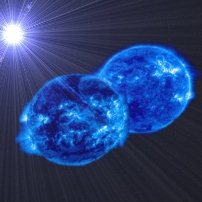
The most massive binary system with the shortest period observed to date
25/11/2014
A study of the binary system “MY Camelopardalis” published in the journal Astronomy & Astrophysics, in which participates the SO postdoctoral researcher at the IAC Sergio Simón, shows that the most massive stars are formed by the merging of other smaller stars, as theoretical models predicted. The binary system is composed of two stars of spectral type O (blue, very hot, and very luminous) with masses 38 and 32 times that of the Sun, which are still burning their initial hydrogen fuel. They are very close together, with an orbital period of less than 1.2 days, which is the shortest period known for stars of this type. The predictable evolution of the system will lead to the merger of the two stars into one object with a mass 60 times that of the sun, before either of them has had time to evolve significantly. >> Read more
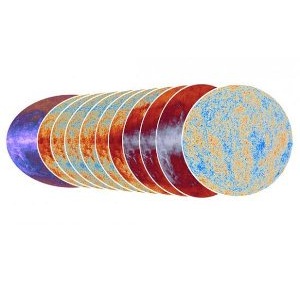
Cosmological results from the Planck satellite published
05/11/2014
The journal Astronomy & Astrophysics has published a special volume of 31 articles based on cosmological data from over 15 months of observations with the Planck satellite, aimed to measure, with unprecedented resolution and sensitivity, the cosmic microwave background radiation (CMB) left by the Big Bang. The IAC provided the electronic control system for one of the two instruments of this satellite, in collaboration with Spanish industry, and has also made a significant contribution to its scientific output. In particular, the astrophysicist of the IAC and Advanced Fellow of the Severo Ochoa Program, Jose Alberto Rubiño, has coordinated the science group made up of over 50 researchers, dedicated to the study of clusters of galaxies detected via the Sunyaev-Zeldovich effect, which distorts the CMB. Three of the 22 articles published in scientific journals by the group coordinated by Rubiño are included in this volume. >>Read more
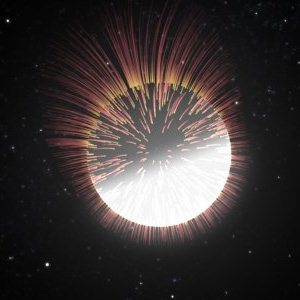
Magnetic fields which rejuvenate stars
20/10/2014
An article which has just come out in the journal Nature among whose authors is Cristina Zurita, a SO postdoctoral researcher at the IAC, offers an explanation of a phenomenon which has intrigued astronomers for a long time: why isolated and cold white dwarfs - which are supposedly the oldest - often show strong magnetic fields while it is expected that their magnetic fields should decay with time. Results indicate that the presence of intense magnetic fields may cause white dwarfs to appear cooler, thus apparently breaking the relationship between temperature and age which has been considered valid until now. >>Read more
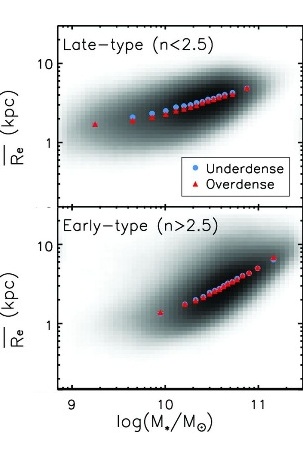
The size of galaxies does not depend on their environment
21/08/2014
Cosmological models predict that the evolution of galaxies is different depending on their environment. One of the observational tools that reflects the evolutionary paths followed by galaxies after their formation is the relation between their size and stellar mass. María Cebrián (SO PhD student) and Ignacio Trujillo, researchers of the IAC and the ULL, have investigated that relation for nearby galaxies, finding that environment does not play a key role in it. While galaxies in less dense environments are slightly larger than those in high-density regions, this difference is very small. Their results, which have been recently published in the Monthly Notices of the Royal Astronomical Society, suggest an earlier evolution of galaxies in clusters, which may have slowed down in the past few Gyr, allowing objects in less dense environments to reach similar sizes to those located in high-density regions.
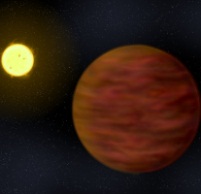
Chemical abundances of stars with brown-dwarf
07/07/2014
The weak boundary that separates giant planets and brown dwarfs (BD, objects that have enough mass to burn deuterium but not for hydrogen fusion) and their formation mechanism are still not well known. In a recent work, Daniel Mata Sánchez (La Caixa SO PhD student at the IAC) and coworkers have analyzed spectra for a sample of stars with BD companions and have compared their chemical abundances with those of a sample of stars with known giant and small planets. They find that the composition of stars with BDs is more similar to that of stars with low-mass planets than to those of giant-planet hosts.
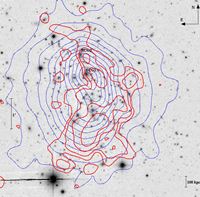
Abell 1351: a peculiar galaxy cluster
04/06/2014
Abell 1351 is a galaxy cluster that shows a radio halo with a quite irregular shape and very large velocity dispersions. An international team of astronomers led by Rafael Barrena, SO postdoc at the IAC, has analyzed X-ray and optical data of this cluster, as well as spectra for ~100 member galaxies, in order to probe its internal structure and dynamics. Their results suggest that Abell 1351 is a massive merging cluster, with two main subclusters and other minor substructures, all tracing the N–S cluster elongation. The work has been published in the Monthly Notices of the Royal Astronomical Society.
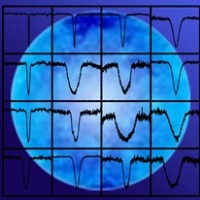
Disentangling broadening components in line-profiles of Galactic OB stars
27/05/2014
The IACOB spectroscopic database has allowed identifying a variety of different types of line-profiles present in the realm of the O and B-type stars. These line-profiles are broadened by rotation as well as other broadening components. A study performed by Simón-Díaz (SO Postdoc) & Herrero, researchers of the IAC and the University of La Laguna, has allowed extracting actual information about the stellar rotation from the line-profiles independently from the effect of other line-broadening mechanisms. >>Read more
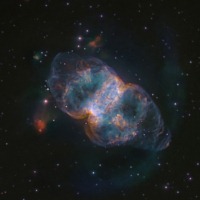
Single rotating stars and the formation of Bipolar Planetary Nebula
10/04/2014
An international team of astronomers from the IA-UNAM and the IAC have found that single stellar rotators are unlikely to be the progenitors of bipolar Planetary Nebulae under the current MHD model paradigm. This work is a result of the collaboration carried out during the Severo Ochoa Visit of Dr. Arturo Manchado Torres to the IA-UNAM in Mexico on October 2013 and has been published in The Astrophysical Journal.
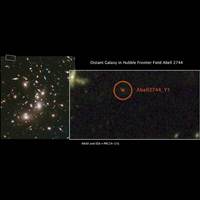
Hubble and Spitzer space telescopes “spy” one of the youngest galaxies in the Universe
07/02/2014
An international team led by astronomers from the IAC and La Laguna University (ULL), including Rui J. Marques Chaves (SO-La Caixa PhD student) has just completed the first analysis of the observations of the Abell 2744 cluster of galaxies, a coordinated program of the Hubble and Spitzer Space Telescopes. The first result of this study is the discovery of one of the most distant galaxies known to date. The results have been published in Astronomy and Astrophysics Letters. >>Read more
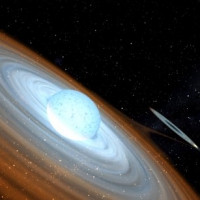
Spanish researchers discover the first black hole orbiting a ‘spinning’ star
15/01/2014
Spanish scientists (including SO Postdoc Sergio Simón) have discovered the first binary system ever known to consist of a black hole and a ‘spinning’ star – or more accurately, a Be-type star. Although predicted by theory, none had previously been found. The observations that led to the discovery were performed with the Liverpool and Mercator telescopes at the Observatorio del Roque de los Muchachos (Canary Islands, Spain). The discovery is published in Nature. >>Read more
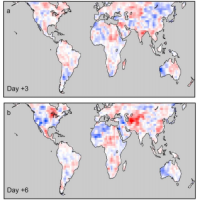
Insight: diurnal temperature ranges unaffected by cosmic ray changes
06/01/2014
Benjamin Laken (SO Postdoc) of the Instituto de Astrofísica de Canarias and Jaša Čalogović of the Hvar Observatory in Croatia have investigated the claims of a Serbian research group who presented evidence that the difference between maximum and minimum daily surface temperatures – the diurnal temperature range – responds to changes in the cosmic ray flux. The main conclusions of this study are also reported in a news article on IOP Science.
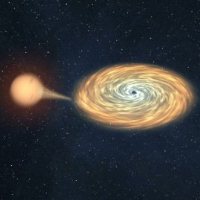
Researchers at the IAC have discovered the fast 'fall' of two stars on black holes
21/11/2013
Thanks to the Gran Telescopio CANARIAS (GTC), a group of researchers at the IAC leaded by the Severo Ochoa postdoc Jonay I. González Hernández, have demonstrated that two companion stars orbiting black holes are indeed falling onto these black holes, but the spiral-in of these companion stars is faster than what the theory predicts. The work has been published in the Monthly Notices of the Royal Astronomical Society. >>Read more


